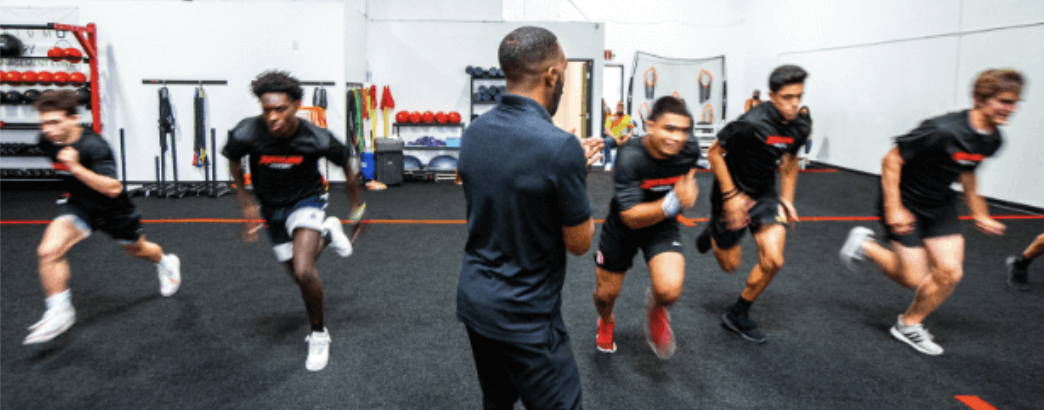Did you know that nearly 1 in 5 adults in the United States experience mental illness each year, yet fewer than half receive professional help? This gap highlights the urgent need for evolving approaches in mental health care. In this article, we explore mental health counseling trends that are transforming how care is delivered, integrating holistic strategies and innovative therapies. Drawing on expert insights from Dorothy Vukmirovich, MS, LPC, CAADC, CCS-D, CAMS-II, CCIS-II of Total Wellbeing Health and Life Coach LLC, we delve into how these trends impact individuals seeking support for mental health and substance abuse challenges.
Startling Facts About Mental Health Counseling Trends in the United States

Mental health care has become a more prominent priority across the United States, with a growing recognition of the complex needs of those affected by mental health and substance abuse. Today, counselors and therapists are seeing a rise in demand for services that address not only symptoms, but the whole person—emotionally, physically, and spiritually. This shift aligns with recent data indicating increased awareness but also persistent barriers preventing many from accessing care.
As Dorothy Vukmirovich, of Total Wellbeing Health and Life Coach, emphasizes, "Mental health is just as important as physical health, and taking care of your mental health the way that most people take care of their physical health is just as essential." This perspective underscores a national move toward reducing stigma and encouraging early intervention and consistent support in mental health counseling.
The Growing Importance of Mental Health Care and Counseling
Over recent years, mental health counseling has evolved from a reactive service for crisis intervention to a proactive, comprehensive support system. Increasingly, counseling integrates prevention, wellness promotion, and customized treatment approaches that focus on long-term recovery and resilience. This trend reflects a deeper understanding of how mental health intersects with other aspects of wellbeing and community support.
Practitioners like Dorothy Vukmirovich have noticed that while many individuals feel nervous about asking for help, offering immediate support and cultivating an accessible environment can make a profound difference. She notes the importance of that first courageous phone call to start healing, emphasizing personalized connection from the outset.
Overview of Current Mental Health Counseling Trends
Integrated Approaches in Mental Health Care and Substance Abuse Treatment

One of the most significant mental health counseling trends is the adoption of an integrated approach to treat mental health and substance abuse simultaneously. Gone are the days when substance abuse was treated in isolation or with only directive measures. Today, care providers consider the full spectrum of an individual's wellbeing—emotional, physical, and spiritual.
Dorothy shares, "Now when we think about mental health and substance abuse, it's more of an integrated approach. We're looking at the whole person, including their emotional, physical, and spiritual health." This comprehensive approach allows counselors to tailor interventions that address underlying causes and support sustainable recovery.
Holistic Health Services: Mind, Body, and Spirit Connection

The trend towards holistic mental health care emphasizes the connection between mind, body, and spirit as essential to healing. Counselors encourage clients to consider factors like nutrition, physical health, and spiritual wellness as integral components of mental health therapy. For example, addressing vitamin deficiencies or the gut-brain connection can relieve symptoms of depression or anxiety, underscoring how physical health directly impacts mental wellbeing.
Dorothy explains, "I ask clients about their recent physical exams and any medical deficiencies, helping them connect with primary care if needed. We also explore what spirituality means for them personally, fostering a healing process that embraces every aspect of the individual."
Innovations in Mental Health Services and Health Treatment Modalities
Trauma Therapy and EMDR: Advancements in Mental Health Treatment

Emerging treatments like Eye Movement Desensitization and Reprocessing (EMDR) represent profound advances in trauma therapy. This method helps clients access and process traumatic memories safely, without having to relive the pain as traditional talk therapy might require. EMDR fosters healing through a compassionate, science-supported technique.
Dorothy highlights, "EMDR helps clients tap into memories without reliving trauma, offering a more compassionate and effective treatment than traditional talk therapy." This innovation broadens the toolkit available to counselors addressing PTSD and complex trauma in more effective, client-centered ways.
Substance Abuse Evaluations and Support for Sensitive Carriers
Another innovative trend is the role of Substance Abuse Professionals (SAP) who provide evaluations and support for sensitive carriers, such as commercial drivers. These evaluations are vital for individuals who have tested positive for substance use, helping them navigate the recovery process and regain their licenses and livelihoods.
Dorothy explains, "Being a SAP evaluator means guiding clients through biopsychosocial assessments and treatment plans, ensuring they receive the therapy or education recommended and follow up for abstinence verification."
Mental Health Services for Diverse Populations in the United States
Counseling for Children, Adults, Couples, and Families

Mental health counseling is increasingly tailored to serve diverse populations across all ages and relationship types. Services extend from children facing developmental and emotional challenges to adults and couples working through relationship or personal difficulties. Family counseling bridges communication and healing for family units.
Parents often initiate therapy for their children, sometimes through insurance referrals or direct outreach via websites or directories. At Total Wellbeing, Dorothy notes, "We offer support from children through adults, couples, and individuals, meeting each person where they are in their journey."
Addressing Process Addictions Beyond Substance Abuse
Mental health counseling trends now encompass process addictions such as gambling, gaming, and compulsive behaviors, recognizing these as legitimate challenges as impactful as substance use disorders. Counseling approaches adapt to address these addictions holistically, promoting long-term recovery and coping strategies.
Dorothy confirms, "I work with addictions beyond substances, including process addictions like gambling and gaming, emphasizing their effect on biochemistry and behavior."
The Role of Group Therapy and Community Support in Mental Health Care

Benefits of Group Settings for Anger Management and Parenting Courses
Group therapy has emerged as a powerful complement to individual counseling. Engaging with peers facing similar challenges offers social support, shared learning, and a sense of community. Particularly in anger management and parenting courses, group dynamics encourage empathy and collective growth, reducing isolation and enhancing motivation.
Dorothy remarks, "Research shows group therapy significantly impacts recovery, providing a space for participants to process emotions together and support each other’s growth."
Creating Safe, Judgment-Free Spaces for Healing
Central to effective mental health counseling is cultivating a safe, non-judgmental environment where clients feel validated and supported. This therapeutic space allows individuals to explore emotions openly and build trust, essential for meaningful progress.
As Dorothy shares, "Therapy is an art and a skill set combined, providing a safe, non-judgmental zone where clients can express themselves and heal." This ethos guides her practice’s warm and welcoming approach.
Practical Tips and Daily Habits to Support Mental Health
Incorporating Mindfulness, Movement, and Nutrition into Wellness Practices

Integrating daily habits such as mindfulness exercises, physical movement, and nutrition plays a crucial role in maintaining mental health. Simple activities like grounding exercises, walking in nature, or mindful breathing help manage anxiety and improve emotional regulation.
Dorothy recommends personalized wellness assignments including these practices as part of therapy, encouraging clients to continue outside sessions for sustained benefits.
The Importance of Positive Social Connections and Support Networks
Strong social support networks are a cornerstone of mental wellness. Connecting with positive, inspiring people nurtures resilience and provides ongoing emotional affirmation. Regular social interaction helps detect shifts in mental health early and contributes to a sense of belonging and purpose.
Dorothy highlights, "Surrounding yourself with uplifting people and combining movement with social time, such as walking or shared meals, strengthens both mental and physical health."
Common Questions About Mental Health Counseling Trends
What are the current trends in counseling?
What are the current trends in mental health?
What is the fastest growing field for mental health counselors?
What is the 2 year rule for therapists?
Comparison of Traditional vs. Modern Mental Health Counseling Approaches
Aspect |
Traditional Approaches |
Modern Approaches |
|---|---|---|
Focus |
Symptom-based, often isolated diagnosis |
Integrated, whole-person care addressing mind, body, and spirit |
Substance Abuse Treatment |
Directive, separate from mental health |
Integrated mental health and substance use disorder treatment |
Therapies |
Primarily talk therapy and medication |
Innovative therapies like EMDR, trauma-informed care, holistic interventions |
Counseling Settings |
Mostly individual sessions |
Combination of individual and group therapy, peer support emphasized |
Client Involvement |
Passive recipient of care |
Active engagement through assignments, mindfulness, and lifestyle changes |
Key Takeaways on Mental Health Counseling Trends
Mental health counseling is evolving towards integrated, holistic care addressing mind, body, and spirit.
Innovative treatments such as EMDR provide effective trauma therapy without retraumatization.
Substance abuse evaluations and support services are critical for sensitive carriers and recovery.
Group therapy enhances recovery through peer support and shared experiences.
-
Daily wellness habits and social connections significantly impact mental health outcomes.

Conclusion: Embracing the Future of Mental Health Care
Dorothy Vukmirovich concludes, "Taking that first step towards mental health care is vital, and at Total Wellbeing, we are here to support every individual on their healing journey." Embarking on this path to integrated, compassionate care can transform lives and communities.
Take the First Step Towards Better Mental Health Counseling Today
Call us at (586) 351-7361
Contact us at GetHealthy@TotalWellBeingHL.com
Visit TotalWellBeingHL.com for more information
 Add Row
Add Row  Add
Add 




Write A Comment